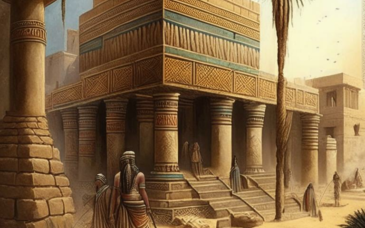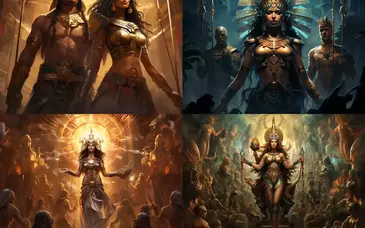

Iraq: Khorsabad, Shamash Temple Neo-Assyrian Period Reign of Sargon II, 721-705 B.C. Bronze 61.0 cm H Excavated by the Oriental Institute, 1931-2 OIM A12468
The fortress of Sargon II at Khorsabad included a complex of temples, one of which was devoted to the sun god Shamash. This bronze band encircled one of a pair of cedar poles-possibly supports for divine emblems-that once flanked the doorway to this temple. The band was affixed to the pole by nails driven through the centers of the rosettes that decorate the three narrow bands framing the two main registers.
In the upper register, Sargon is shown grasping two massive bulls by the horns. This ancient motif, known as "the master of animals," was well established in Mesopotamian royal iconography and perhaps symbolized the dominance, vitality, and potency of the reigning monarch. To the left of the king and bulls is a large bird depicted in flight, to the right, facing the king and bulls, is an attendant wearing a kilt. In the lower register, only a fig tree and the tip of a plough are preserved.




